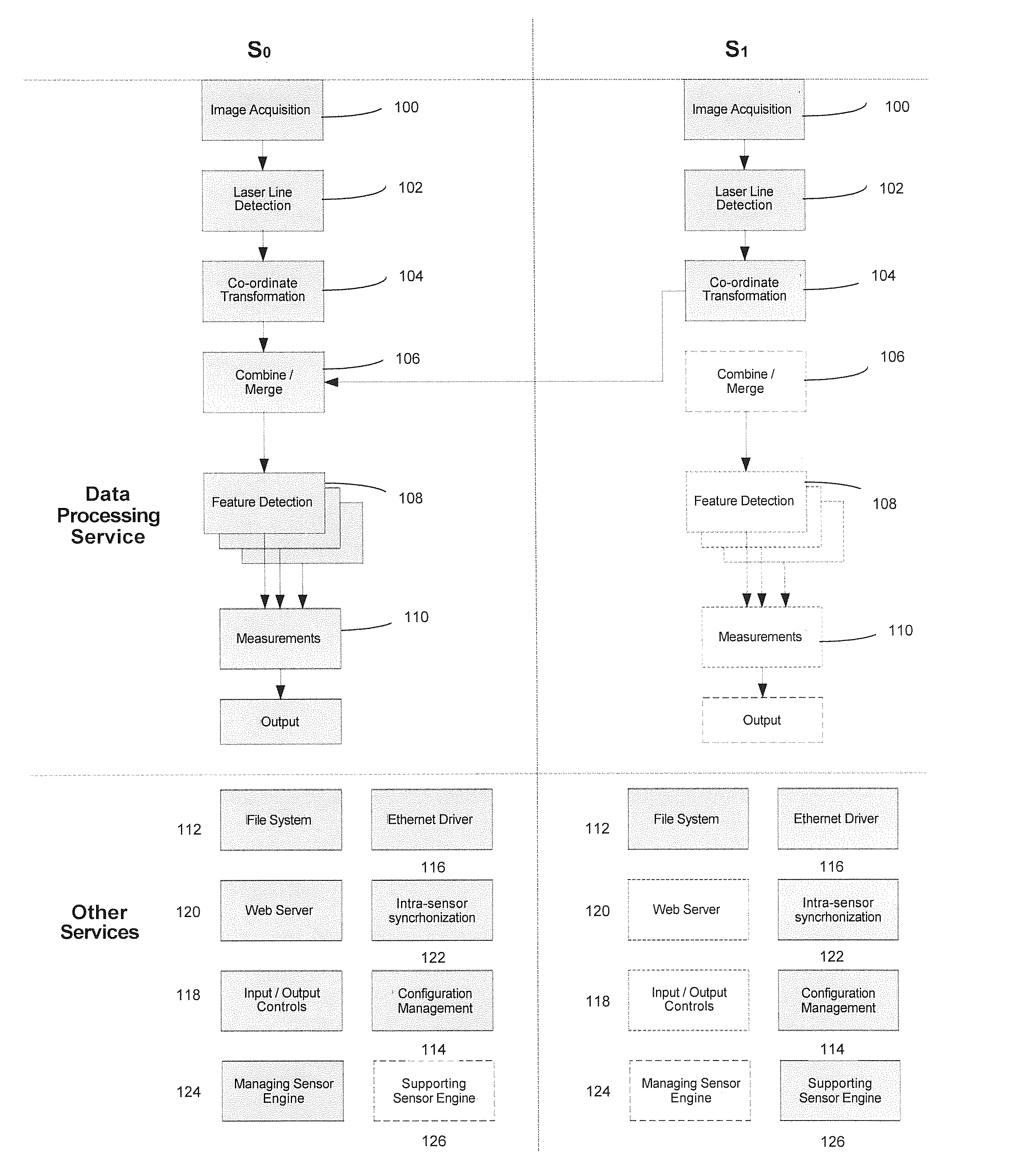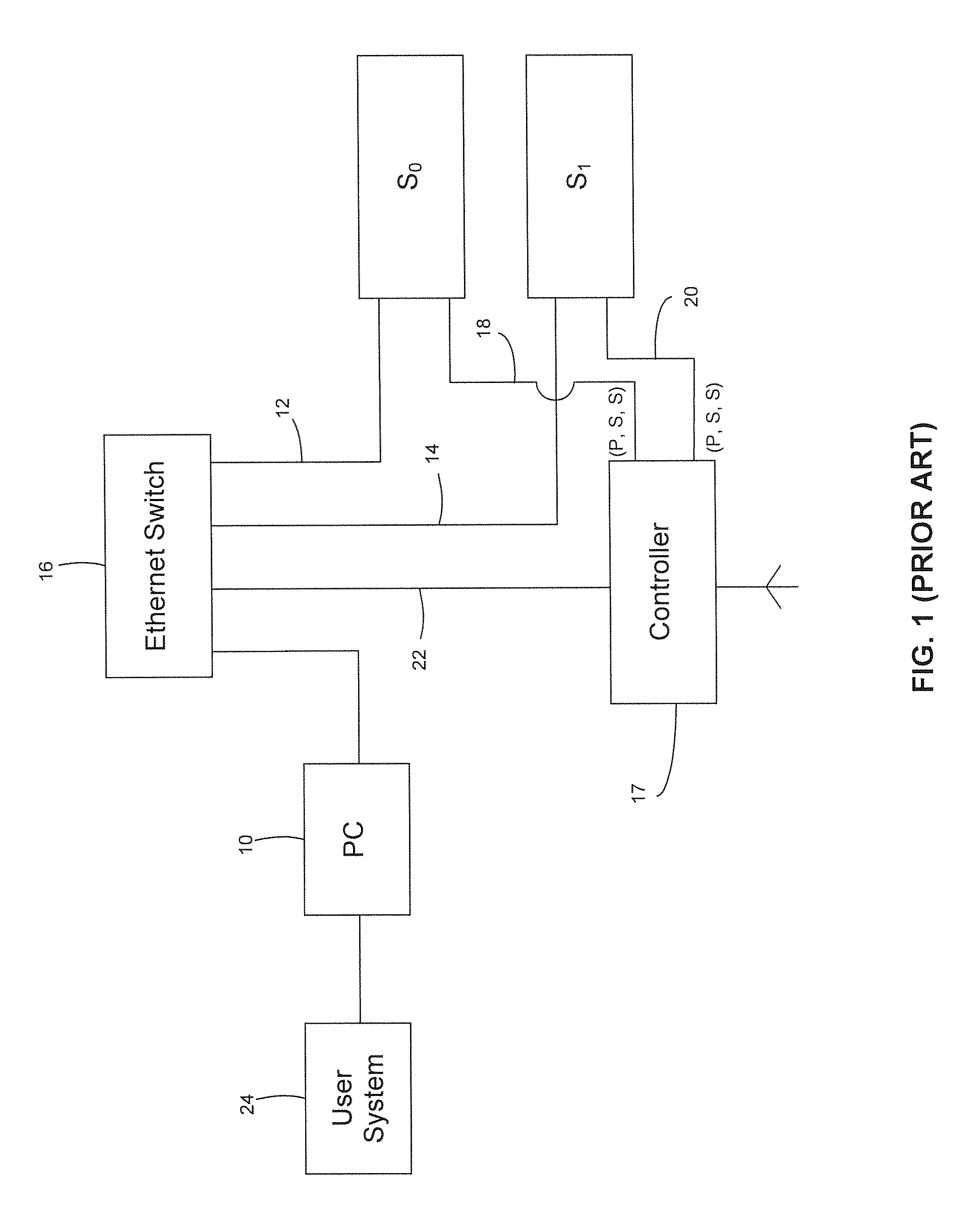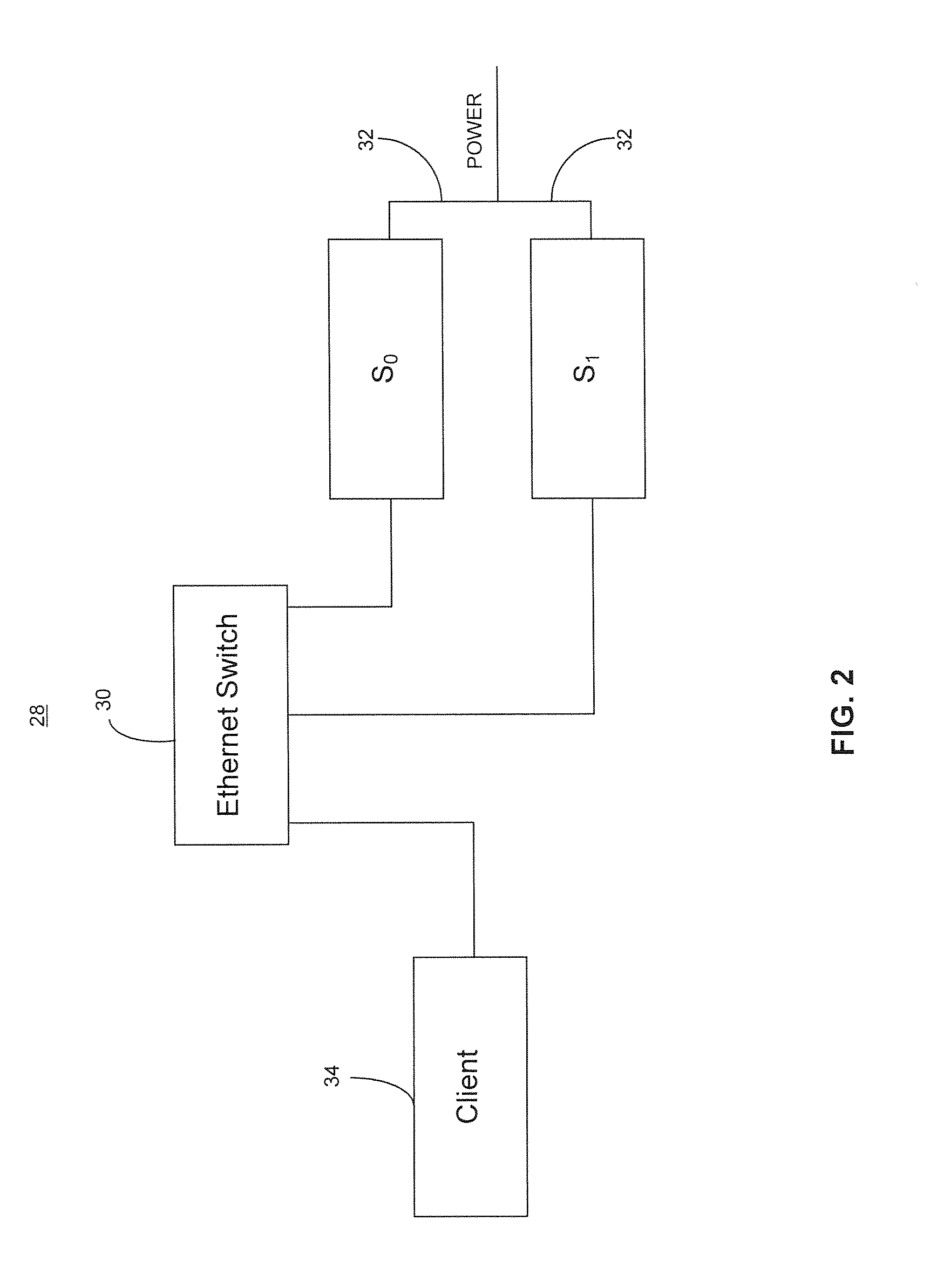Sensor system processing architecture
a sensor system and processing architecture technology, applied in the field of noncontact imaging sensors, can solve the problems of system supplier supply of components, cost, etc., and achieve the effects of reducing the number of components, reducing the amount of cabling involved, and simple physical setup
- Summary
- Abstract
- Description
- Claims
- Application Information
AI Technical Summary
Benefits of technology
Problems solved by technology
Method used
Image
Examples
Embodiment Construction
[0045]The following is a description of the preferred embodiment of the invention as presently contemplated. Not all possible embodiments within the scope of the invention are described.
[0046]Referring now to FIG. 2, the preferred embodiment of the system 28 according to the invention comprises a managing sensor S0 and a support sensor S1. Although a single support sensor S1 is used in the preferred embodiment, additional support sensors S1 may be included in the system 28. The managing sensor S0 and the support sensor S1 are networked via network switch 30, preferably via Ethernet connections such that switch 30 is an Ethernet switch. Each sensor is preferably programmed with a factory assigned default IP address as well as a factory-assigned serial number.
[0047]Power is supplied to each sensor from a power source (not shown) by means of a cord set 32 connecting the sensors and that includes power cables. A client device 34, such as a computer with a user interface, may also be con...
PUM
 Login to View More
Login to View More Abstract
Description
Claims
Application Information
 Login to View More
Login to View More - R&D
- Intellectual Property
- Life Sciences
- Materials
- Tech Scout
- Unparalleled Data Quality
- Higher Quality Content
- 60% Fewer Hallucinations
Browse by: Latest US Patents, China's latest patents, Technical Efficacy Thesaurus, Application Domain, Technology Topic, Popular Technical Reports.
© 2025 PatSnap. All rights reserved.Legal|Privacy policy|Modern Slavery Act Transparency Statement|Sitemap|About US| Contact US: help@patsnap.com



